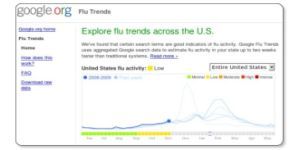Article
Google Search Trends Successfully Predicts High Flu Volume in Hospitals
Author(s):
Hospitals looking to be prepared for a sharp increase in patients during flu season may be better off monitoring trends in Internet search traffic than waiting for lagging government reports to arrive, Johns Hopkins University researchers report.

Hospitals looking to be prepared for a sharp increase in patients during flu season may be better off monitoring trends in Internet search traffic than waiting for lagging government reports to arrive, Johns Hopkins University researchers report.
For their study, the researchers gauged the effectiveness of Google Flu Trends (GFT), which estimates levels of influenza in a given area based on influenza-related queries by local Internet users, by comparing its findings from January 2009 through October 2010 with the number of people who came to the Johns Hopkins Hospital in Baltimore with flu-like symptoms.
The results showed that the search trends detected by GFT were associated with the number of positive influenza test results and the number of emergency department patients presenting with influenza-like symptoms for both adults and children. Measures of emergency department crowding for children, such as total emergency room volume and the rate at which patients left the hospital without being seen, were also reasonably well correlated with GFT.
The authors concluded in the study abstract that “city-level GFT shows strong correlation with influenza cases,” which validates its uses as an emergency department “surveillance tool.”
Emergency departments currently rely on Centers for Disease Control and Prevention flu case reports provided from October through May—“flu season”—as a tracking method for flu outbreaks. These reports, however, cannot offer the up-to-date data required to properly prepare for a surge of flu patients.
The results could eventually lead to a “standard regional or national early warning system for frontline health care workers,” Richard Rothman, MD, PhD, an emergency medicine physician and researcher at the Johns Hopkins University School of Medicine and the senior investigator on the study, said in a press release.
The study was published in the January 9 issue of Clinical Infectious Diseases.




